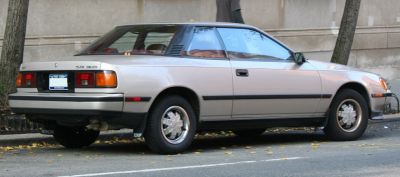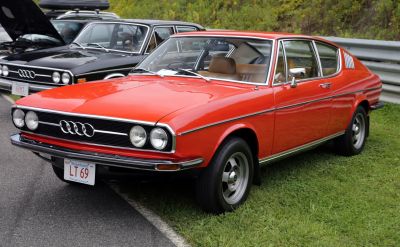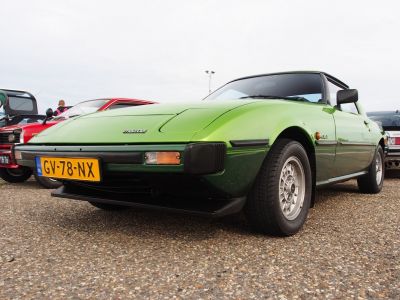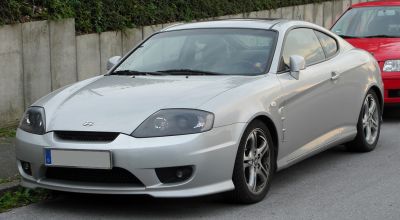 1990 Mitsubishi Eclipse I (1G) Dimensions, Size & Specs
1990 Mitsubishi Eclipse I (1G) Dimensions, Size & SpecsMeasurements of the 1990 Mitsubishi Eclipse I, engineered for optimal performance and comfort
| Dimensions | |
|---|---|
| Length: | 4330-4390 mm170.5-172.8 in14.2-14.4 ft |
| Width: | 1695 mm66.7 in5.6 ft |
| Height: | 1305-1321 mm51.4-52.0 in4.3-4.3 ft |
| Ground Clearance: | 160 mm6.3 in0.5 ft |
| Trunk Capacity: | 290 liter10.2 cu ft |
| Trunk Capacity (Max): | 730 liter25.8 cu ft |
| Weight Specifications | |
| Curb Weight: | 1145-1403 kg2524-3093 lbs |
| Maximal permitted Weight: | 1620-1635 kg3571-3605 lbs |
| Tire Specifications | |
| Rims Sizes: | 14-inch rims:
|
| Tire Sizes: |
|
The Mitsubishi Eclipse I (1G), produced from 1990 to 1992, represents the first generation of this sporty compact car available in both coupe and hatchback body styles. Measuring between 4330 and 4390 millimeters (170.5 to 172.8 inches) in length, it presents a moderately sized footprint suitable for urban and suburban driving. Its width ranges from 1690 to 1695 millimeters (66.5 to 66.7 inches), while height measures between 1305 and 1321 millimeters (51.4 to 52 inches), contributing to a sleek and aerodynamic profile that enhances its sporty appeal.
The curb weight of the Eclipse I varies from 1145 to 1403 kilograms (2525 to 3094 pounds), reflecting differences in trim levels and equipment. Its maximum gross weight lies between 1620 and 1635 kilograms (3571 to 3605 pounds), indicating its carrying capacity including passengers and cargo. Ground clearance is set at 160 millimeters (6.3 inches), striking a balance between sporty handling and everyday usability.
Interior practicality is highlighted by a luggage capacity of 290 liters (10.2 cubic feet) with the rear seats upright. Folding the rear seats expands this space significantly to 730 liters (25.8 cubic feet), providing generous cargo volume for a vehicle in the compact sports segment.
Wheel options for the Eclipse I include rim sizes of 14, 15, and 16 inches, with tire specifications such as 185/70 R14, 195/60 R15, and 205/55 R16 V sized tires which emphasize performance and road handling. Overall, the Mitsubishi Eclipse I blends compact external dimensions with versatile interior capacity and sporty characteristics, making it an iconic early 90s sports coupe and hatchback choice.
Discover the standout features that make the 1990 Mitsubishi Eclipse I a leader in its class
Have a question? Please check our knowledgebase first.
The Mitsubishi Eclipse I (1G), produced between 1990 and 1992, has a length range from 4330 mm to 4390 mm, which is approximately 170.5 inches to 172.8 inches. This length places the Eclipse I firmly within the compact sports coupe segment of the early 1990s, balancing sporty design with manageable urban drivability. The slight variation in length depends on specific trims or body styles such as the coupe and hatchback versions.
The Mitsubishi Eclipse I (1G) has a width ranging from 1690 mm to 1695 mm, about 66.5 inches to 66.7 inches. This width supports a comfortable two-door coupe cabin size by early 1990s compact standards, providing decent shoulder room for passengers without compromising the car's aerodynamic profile and sporty stance. Its compact width makes it suitable for city driving and parking, while still offering a driver-focused cockpit.
The Eclipse I height varies between 1305 mm and 1321 mm (approximately 51.4 inches to 52 inches). This relatively low profile enhances the car’s sporty appearance and improves aerodynamic efficiency. However, the lower height means headroom is a bit tighter compared to sedans or larger vehicles, which is typical for sports coupes of this era. The aerodynamic stance contributes to better handling and a lower center of gravity.
The curb weight of the Mitsubishi Eclipse I ranges from 1145 kg to 1403 kg (2524 lbs to 3094 lbs), depending on trim and equipment. The maximum weight is approximately 1620 kg to 1635 kg (3571 lbs to 3605 lbs). These weights reflect a compact and relatively lightweight sports coupe design, which helps in delivering agile handling and better fuel efficiency while maintaining structural rigidity and safety.
The Mitsubishi Eclipse I features a luggage capacity of 290 liters (about 10.2 cubic feet) with the rear seats in their upright position, sufficient for everyday errands and light travel. When the rear seats are folded down, the cargo space expands significantly to 730 liters (approximately 25.8 cubic feet), offering versatility for larger items or extended road trips. This capacity is relatively practical for a compact sports coupe, especially with the hatchback variant.
The Mitsubishi Eclipse I offers a ground clearance (ride height) of 160 mm, around 6.3 inches. This clearance balances sporty handling and practicality, allowing the car to achieve good road grip and stability typical for a sports coupe, while still providing enough height to clear most urban road obstacles like curbs and speed bumps. However, it may not be suitable for rough or off-road conditions.
Yes, the Eclipse I generally fits well into a standard residential garage. With a length up to 4390 mm (172.8 inches) and a width close to 1695 mm (66.7 inches), it conforms comfortably within the typical garage dimensions that accommodate compact and midsize vehicles. Its relatively low height, below 1.33 meters (52 inches), also ensures it fits under standard garage door heights, making it convenient for everyday parking and storage.
The Mitsubishi Eclipse I (1990-1992) was the very first generation of the Eclipse model line, so it has no predecessor in the Eclipse lineup to compare to directly. It introduced the Eclipse as a sporty, compact coupe designed for the early '90s, focusing on combining practicality with sportiness. As a first-generation vehicle, it set the baseline in terms of size, weight, and features that would influence later generations.
Compared to similar compact sports coupes of the early 1990s, such as the Toyota Celica, Honda Prelude, and Mazda MX-6, the Mitsubishi Eclipse I holds its own in terms of size and dimensions. Its length of about 4330-4390 mm (170.5-172.8 in) and width of approximately 1690-1695 mm (66.5-66.7 in) is competitive, providing a sporty yet practical footprint. The luggage capacity, especially with rear seats folded, also stacks up well, offering more flexibility than some rivals. Generally, the Eclipse I appealed to buyers looking for a stylish, affordable, and versatile compact sports car.
The Mitsubishi Eclipse I came with rim sizes including 14 inches and 16 inches, with tire options ranging from 185/70 R14, 195/60 R15 to 205/55 R16 V. Larger rims and wider tires, like the 16-inch wheels with 205 mm wide tires, offer improved road grip, better cornering stability, and sportier handling characteristics. Smaller rims and narrower tires may prioritize ride comfort and fuel efficiency. These varied options allowed buyers to tailor the car's performance and ride dynamics to their preferences.
Discover similar sized cars.

| Production: | 1986-1990 |
|---|---|
| Model Year: | 1985 |
| Length: | 4365-4380 mm171.9-172.4 in |
| Width: | 1710 mm67.3 in |
| Height: | 1290 mm50.8 in |

| Production: | 1970-1973 |
|---|---|
| Model Year: | 1970 |
| Length: | 4398 mm173.1 in |
| Width: | 1750 mm68.9 in |
| Height: | 1341 mm52.8 in |

| Production: | 1989-1994 |
|---|---|
| Model Year: | 1990 |
| Length: | 4330 mm170.5 in |
| Width: | 1690 mm66.5 in |
| Height: | 1310 mm51.6 in |

| Production: | 1979-1986 |
|---|---|
| Model Year: | 1978 |
| Length: | 4293 mm169.0 in |
| Width: | 1651 mm65.0 in |
| Height: | 1270 mm50.0 in |

| Production: | 2001-2009 |
|---|---|
| Model Year: | 2002 |
| Length: | 4395 mm173.0 in |
| Width: | 1760 mm69.3 in |
| Height: | 1330 mm52.4 in |
